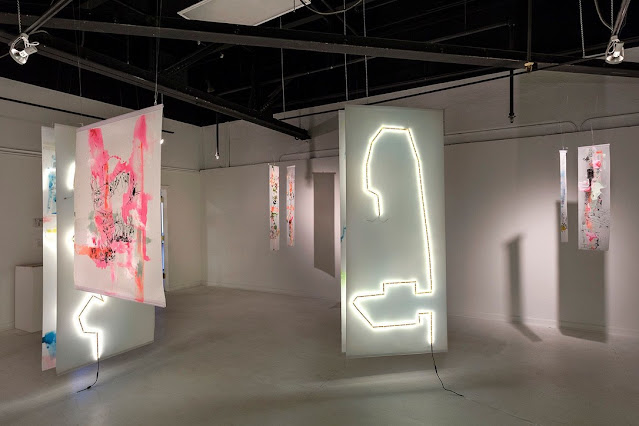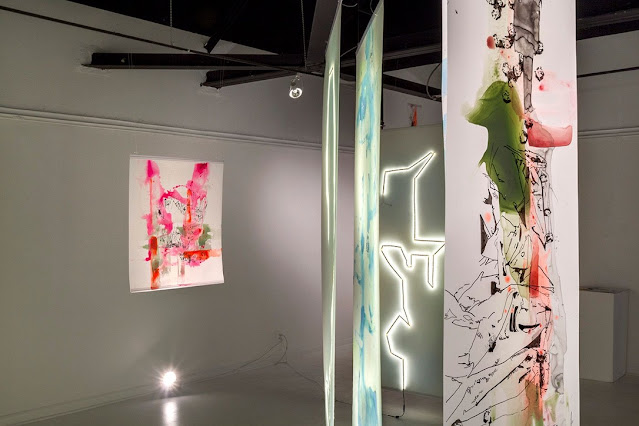Zeitgeist, dimensions variable, ink and acrylic on drafting film, LED backlight, installation view
Zeitgeist, dimensions variable, ink and acrylic on drafting film, LED backlight, installation view
Zeitgeist, dimensions variable, ink and acrylic on drafting film, LED backlight, installation view
Joana draws her artistic inspiration both from her travels and her direct environment. For her, drawing and painting are moments of quiet and introspection. This allows her to analyze and interpret the Zeitgeist, focusing on contrasting themes such as urban life vs. nature, environmental protection vs. pollution, or organic vs. synthetic. Other prominent themes of hers include childhood, free play and the experience of nature—inspired by her own childhood memories and her observation of her three children playing and interacting. Joana feels that children’s simple, spontaneous play in a natural setting is increasingly being lost in contemporary America as more and more emphasis is put on school work and organized activities.
Joana began working with plastic film because it represents what she sees all around her, even cluttering the beaches of Florida. She considers plastic consumption and pollution in the US a major issue. In her work, however, plastic is hardly noticeable, and has an organic quality. To avoid pushing an in-your-face message, she plays with organic and synthetic appearances for the sake of a more subtle underlying idea.
Joana’s delicate and intricate works combine drawing and painting, and are filled with technical, visual and conceptual juxtapositions and dualisms. The imagery in these collage-like creations reveals intertwined, connotative dream landscapes and explores environmental and existential themes. These invite the observer to roam freely beyond the canvas.
Fragments taken out of context and assembled together in a new creation: Urbanism and nature, inside and outside, specific locations and open areas, near and far, silence and commotion, superposition and exposure, resolution and desire, ease and self-absorption. With partially hidden details peeking out from behind, Joana creates more than just visually complex and beautiful artwork—she also engages in narratives that inspire the observer to think, dream, discover, and revel in nature.
Joana draws with ink and paints with diluted acrylic paint on architectural polyester film. Her love of drawing becomes particularly apparent in her smaller formats. These include filigree pen drawings of impressions of nature against white spaces and brightly colored striations. In some cases, these drawings become figural upon closer inspection to reveal such scenes as climbing children. Often illuminated with lights that are integrated in their frames, these works appear to be small windows into nature.
Her larger formats typically hint at urban architecture or natural landscapes. Some of them are free-hanging and illuminated from behind using LED light strips and other light sources, thereby enhancing the brightness of the colors. Ink layers of varying thicknesses, partially in neon colors, bring about an iridescent quality where images of real architecture are combined with a colorful interpretation of nature through the overlay of special polyester films. This creates a sophisticated, soft-focus effect that is both graphically delicate and gossamer-fine in style, conveying more haziness than tangible reality, more vision than impression.
The illuminated free-hanging works are Joana’s vision of bright city lights and she specifically designs the light to fit each artistic creation. She also likes enabling the observer to walk around each work and notice the different images available from every angle, as it lends a sculptural quality to the art.







Comments
Post a Comment